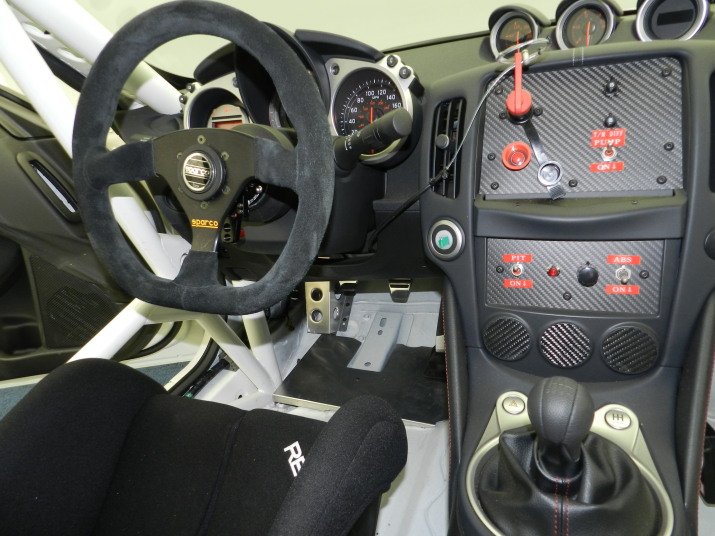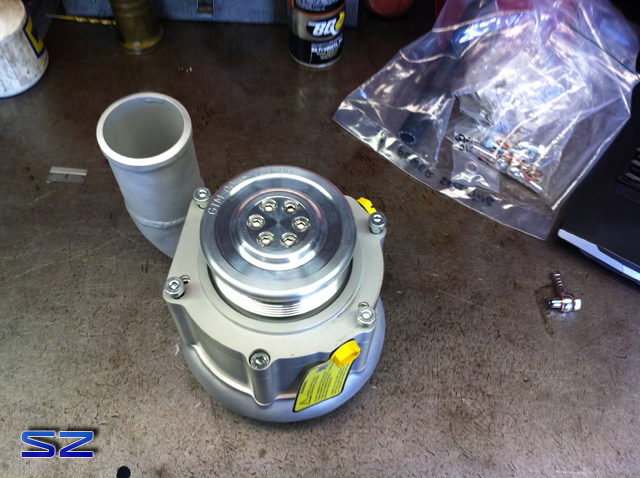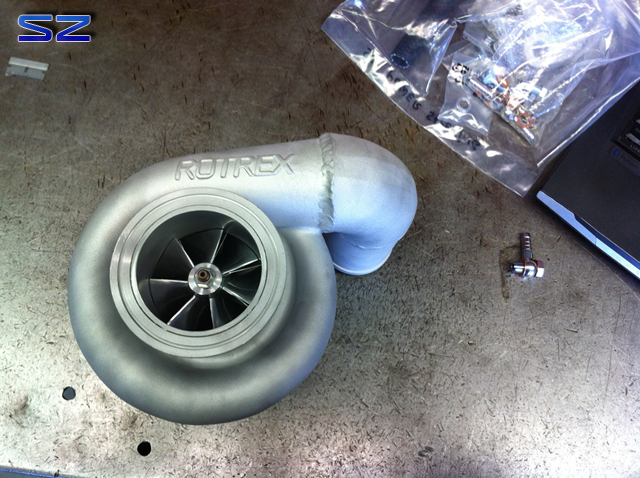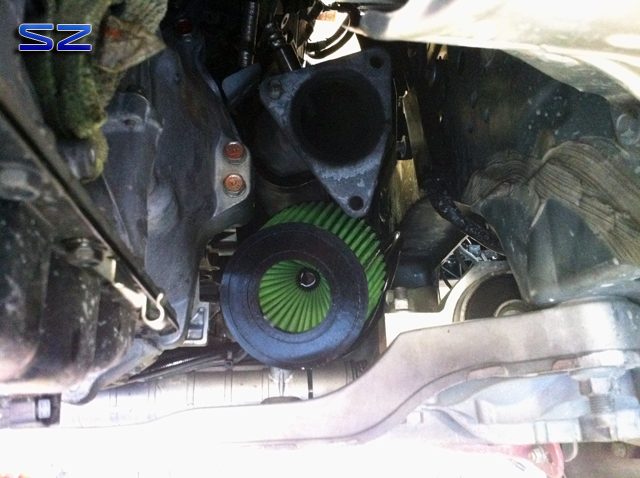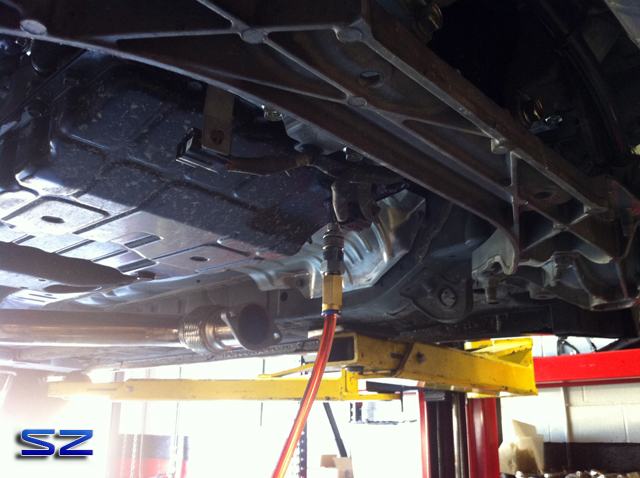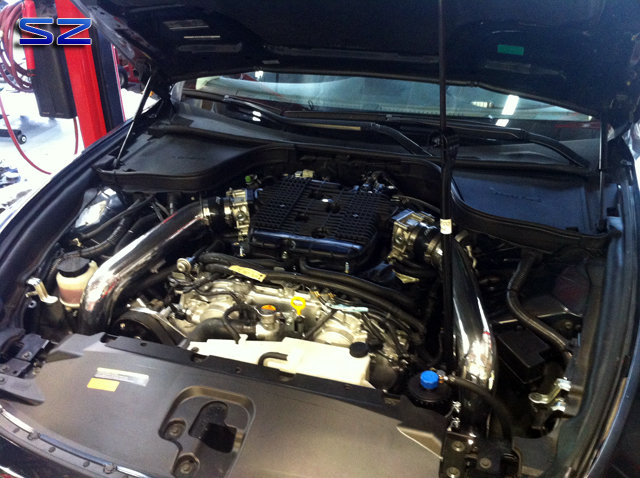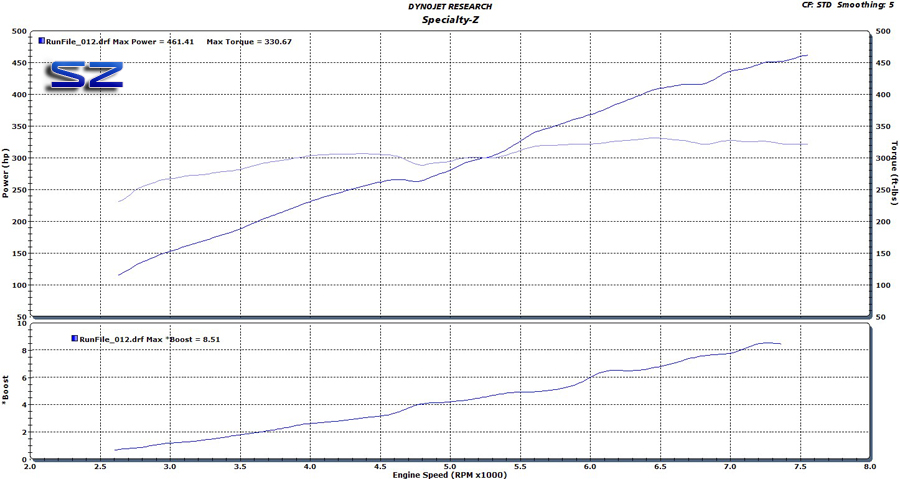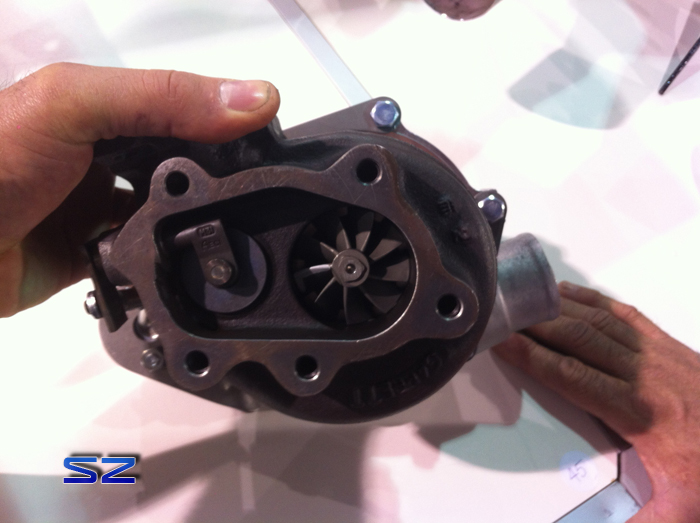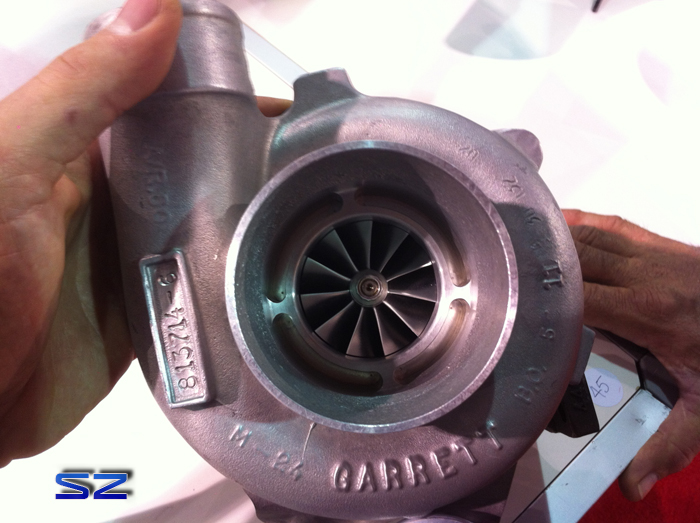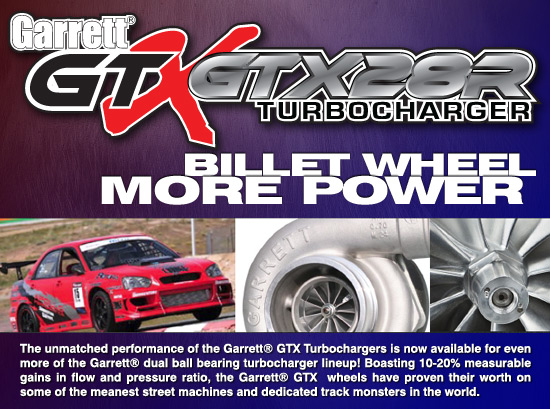I figured it would be a good idea to offer a post on boost vs. octane to help Z owners make educated decisions for themselves, regarding how much boost they can safely run.
Not all Z engines are going to have the exact same threshold for knock for a given PSI, but I can offer what the norm is based on tuning hundreds of Z cars, and tuning with a Knock detection system for some time now.
The following is the safe norm for most standard set ups that are properly tuned in the mid to low 11 to 1 air fuel ratio range with standard 8.5 to 1 compression.
91 octane 14 PSI
93 octane 16 PSI
94 octane 17 PSI
100 octane 20 PSI
These would be the average safe boost numbers for the given fuel octane with conservative ignition timing in the maps, running more aggressive ignition timing would require running even lower boost for the given octane.
Of course there will always be anomalies…….
I have seen where 10 PSI wants to detonate on 91 octane, I know a car that can only safely make 13 PSI on 94 octane, that is with only 13 degree’s ignition timing in the top of the high load areas of the map. That car put down great numbers that appeared as though is was running normal boost and timing, this was because this car had abnormally high compression.
Some cases you can make higher PSI for the octane than the numbers I am offering, but they are not common, typically it is because the engine has lower compression.
It is possible to safely have a small higher spike as long as most of the boost is in the suggested range.
Many built engines need to run even lower boost levels than the ones suggested because they have higher compression. As the engines get older, some blocks have been decked more than once and some heads have been milled more than once, some piston companies are also making the pistons to slightly higher compression.
When tuning, several things are juggled to stay in the safe range that offers no detonation.
Compression, Boost, Ignition Timing, Cam Timing, backpressure, and heat are the main variables.
If the engine has higher compression, you will need to run less boost to keep from having detonation.
If the engine has less compression, you can run more boost. The final power numbers that are safe for a given turbo size and group of parts are commonly similar no matter how you get there as far as higher compression with lower boost or higher boost with lower compression. Basically you can only have so much pressure in the cylinder for a given octane fuel, before the fuel will ignite from heat.
Less heat from removing exhaust restriction can allow you to go a little higher, and more efficient intercoolers can allow you to go a little higher as well.
Bolting on bigger turbos move more air and allow more flow on both the intake and exhaust side, this allows more power at the same boost level. Bolting on a larger turbo does not allow you to make more boost with the same octane as a smaller turbo, at the same pressure you still have similar heat that wants to ignite the fuel at the same pressure for a given octane.
If a engine has experienced a lot of detonation, it will be more detonation sensitive, this is because detonation causes pitting of the heads and the top of the pistons. These small pits have sharp edges that glow red with heat much easier than a smooth surface. These “hot spots” will start detonation very easy and require running even lower boost to prevent detonation.
I use to believe it was safe to run about 1 PSI more than I listed, this was before I invested in a knock detection system.
After tuning with a knock detection system only a couple times, I can not believe I ever tuned without one.
With the proper tools, it is very easy to hear knock and know the real knock threshold for that cars set up. It is amazing how much knock can be present without being able to hear anything with the human ear, inside or outside the car in a dyno room.
I am offering the octane vs. boost guide based on what I have found to be average safe levels with tools that allow me to know if the engine knocks and not just a guess or thinking everything looks fine.
No matter what a tuner tells you, I would not recommend running higher boost than I have listed unless the tuner uses a knock device to know your true knock threshold.
You can also install a knock detection system and the system can be set up to pull timing if knock is detected like a lot of newer car systems.
Enjoy the boost, but keep it safe!
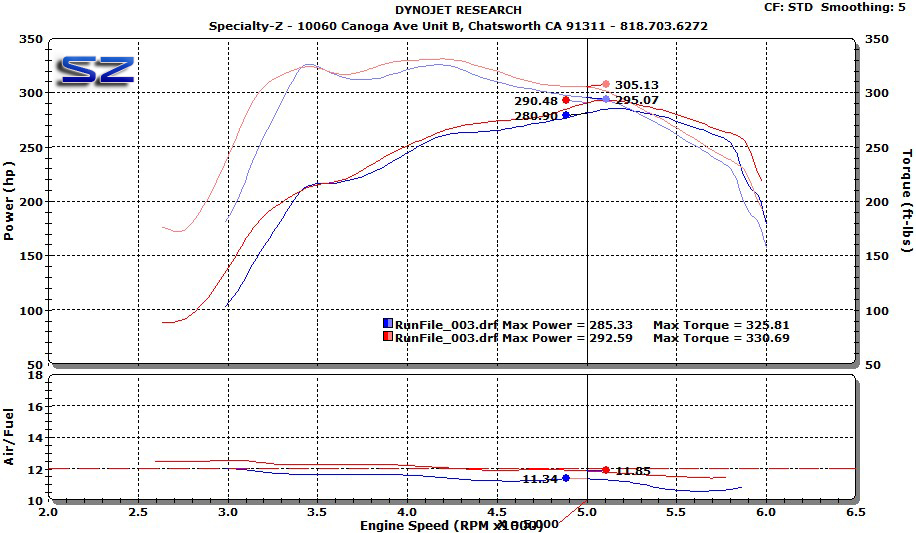 Blue run was on the OE air filter and red performed with the K&N air filter. Good gains for only an air filter. Mixture leaned out as a result of the increased air flow.
Blue run was on the OE air filter and red performed with the K&N air filter. Good gains for only an air filter. Mixture leaned out as a result of the increased air flow.


